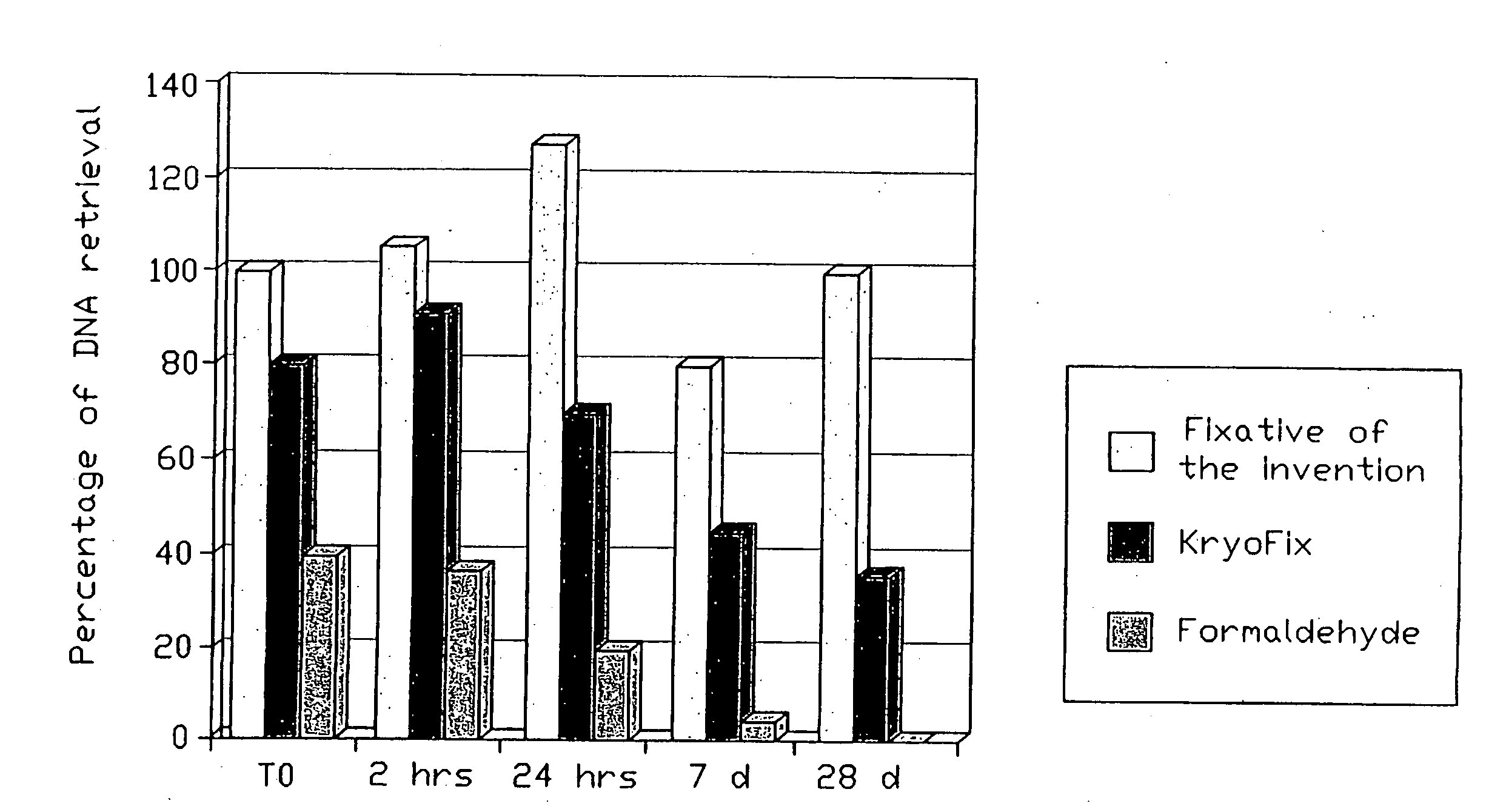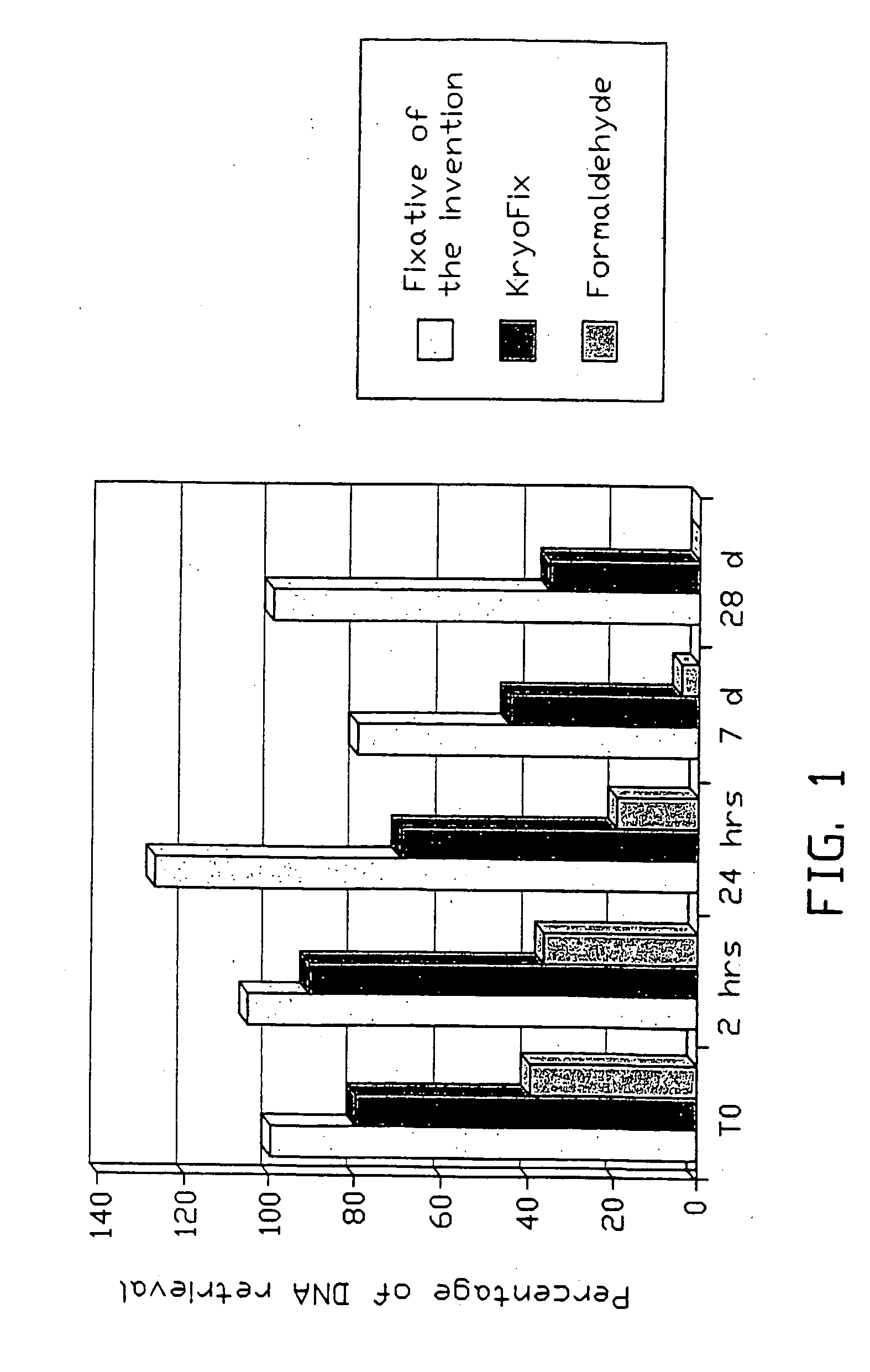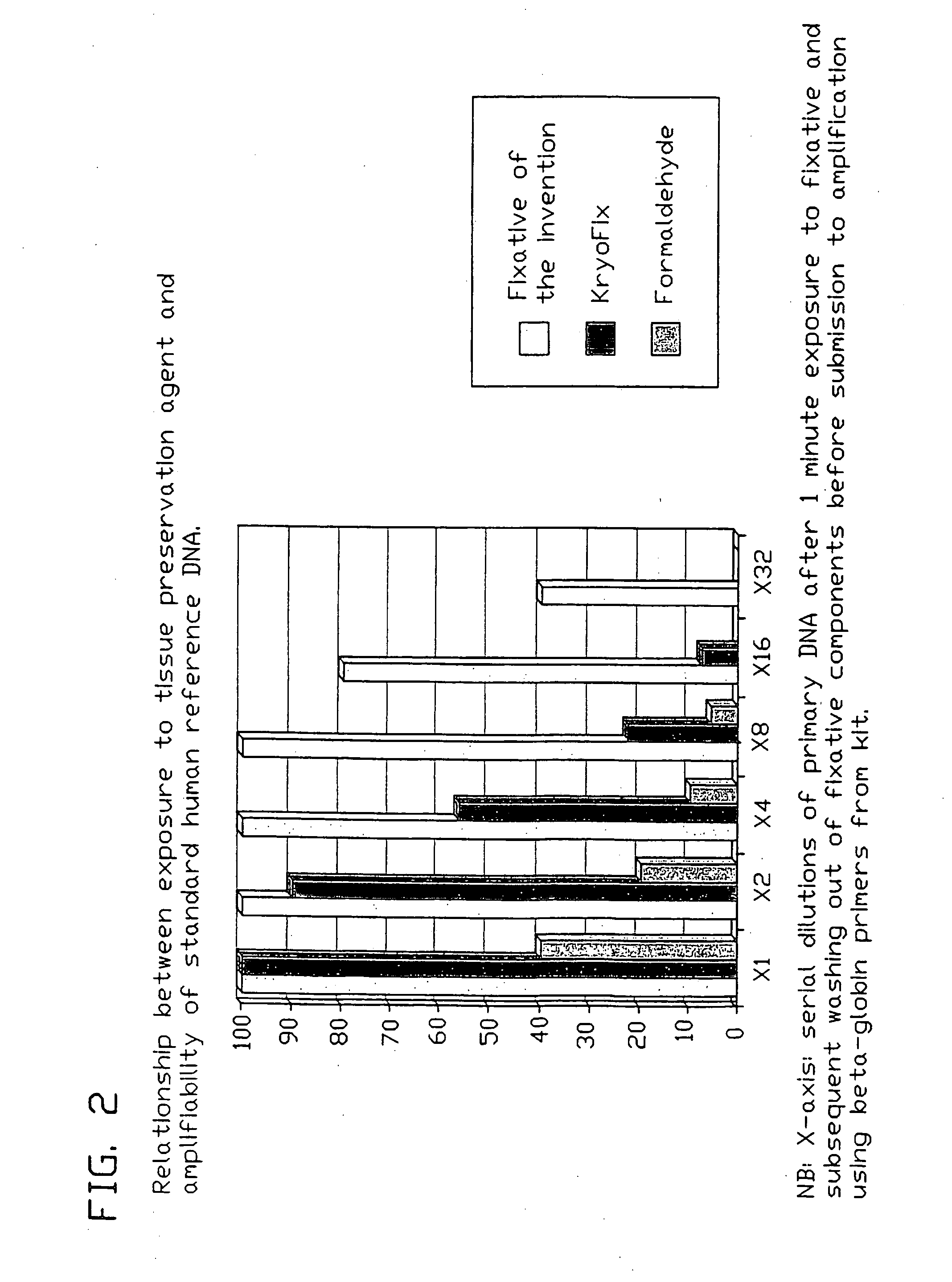Fixative composition
a technology of composition and fixative, applied in the field of fixative composition, can solve the problems of heavy metal, little additional knowledge sought, and inability to study the characteristics and kinetics of tissue penetration
- Summary
- Abstract
- Description
- Claims
- Application Information
AI Technical Summary
Benefits of technology
Problems solved by technology
Method used
Image
Examples
Embodiment Construction
AND EXPERIMENTS
Overall Experimental Design, General Methods and Materials:
[0089]For the experiments to be defined below, testicular samples of greyhound dogs, to be sterilized as part of an international dog rescue and replacement program, were obtained fresh and immediate at castration by a team of veterinary surgeons and immediately provided to the experimental group.
[0090]As the internal quality control for nearly all commercially available PCR detection assays uses primers for human beta-globin gene, and as this gene is conserved between dog and man, the commercially available primer sets were used for quality control in this study. The amplified product in dogs is of exactly the same length as that in man.
[0091]For sub-studies of the effect of the components of the fixative composition of the invention alone and in combination on pure DNA, compared to the effects of KryoFix and formaldehyde (see below) we used human reference DNA from the LightCycler Control Kit DNA (Roche, Ger...
PUM
 Login to View More
Login to View More Abstract
Description
Claims
Application Information
 Login to View More
Login to View More - R&D
- Intellectual Property
- Life Sciences
- Materials
- Tech Scout
- Unparalleled Data Quality
- Higher Quality Content
- 60% Fewer Hallucinations
Browse by: Latest US Patents, China's latest patents, Technical Efficacy Thesaurus, Application Domain, Technology Topic, Popular Technical Reports.
© 2025 PatSnap. All rights reserved.Legal|Privacy policy|Modern Slavery Act Transparency Statement|Sitemap|About US| Contact US: help@patsnap.com



